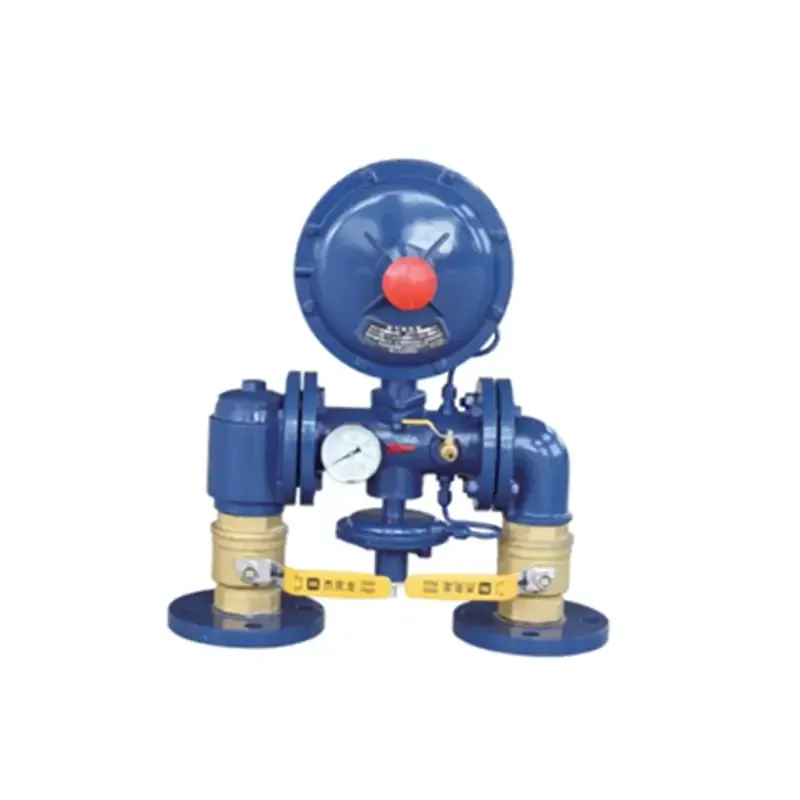
Dec . 24, 2024 05:35
Back to list
Gas Pressure Vessels and Their Importance in Industrial Applications and Safety Regulations
Gas Pressure Vessels Understanding Their Importance and Applications
Gas pressure vessels play a crucial role in various industries, providing a safe and efficient means of storing gases under high pressure. These vessels are designed to withstand the internal forces resulting from gas pressure and are an essential component in systems where gases must be stored, transported, or utilized in processes. This article will explore the design, applications, safety considerations, and future trends of gas pressure vessels.
Design and Construction
Gas pressure vessels are typically constructed from robust materials such as carbon steel, stainless steel, or other alloys that can endure extreme conditions. The design of these vessels must comply with rigorous industry standards, including those set by organizations such as the American Society of Mechanical Engineers (ASME) or the European Pressure Equipment Directive (PED).
Key design factors include the vessel's shape, size, wall thickness, and the type of gas it will contain. Spherical and cylindrical shapes are common due to their ability to evenly distribute stress. Additionally, rigorous calculations and testing are conducted to ensure the vessel can handle the maximum anticipated pressure and temperature.
Applications
The applications of gas pressure vessels are diverse and span several industries. In the energy sector, they are used in natural gas storage and transport, helping to maintain supply and optimize energy distribution. In the chemical industry, these vessels are critical for the safe storage of reactants and products under pressure, facilitating various processes such as chemical reactions and gas separation.
Moreover, gas pressure vessels are essential in the medical field, particularly in the storage of gases like oxygen and nitrous oxide for hospitals and clinics. They also find applications in the food and beverage industry, where they are used for carbon dioxide storage in carbonated drinks. Additionally, the emerging field of renewable energy utilizes gas pressure vessels in hydrogen storage systems, contributing to the development of cleaner energy solutions.
Safety Considerations
gas pressure vessel

Given the high pressures involved, safety is a paramount concern when dealing with gas pressure vessels. Regular inspections, maintenance, and adherence to safety standards are critical in preventing accidents. Engineers must ensure that vessels are equipped with safety systems such as pressure relief valves, rupture discs, and safety interlocks.
Proper training for personnel handling these vessels is equally important. Operators must understand the principles of pressure vessel operation, potential hazards, and emergency response protocols. Advances in monitoring technology, such as pressure sensors and remote monitoring systems, are enhancing safety and allowing for better predictive maintenance.
Future Trends
The future of gas pressure vessels is promising, especially with the growth of industries focused on sustainability. With increasing demand for clean energy, there is a rising interest in hydrogen storage solutions. Innovations are underway to develop lightweight composite materials that can withstand high pressures while reducing the overall weight of the vessels.
Additionally, the integration of smart technology is set to revolutionize the operation and maintenance of gas pressure vessels. Internet of Things (IoT) devices, data analytics, and artificial intelligence can provide real-time monitoring and predictive failure analysis, resulting in enhanced safety and efficiency.
Furthermore, regulatory frameworks are evolving to accommodate new technologies and materials, ensuring that safety standards keep pace with industry advancements. This evolution presents both challenges and opportunities for engineers and manufacturers in the gas pressure vessel market.
Conclusion
Gas pressure vessels are indispensable in various sectors, ensuring the safe and efficient storage of gases under high pressure. Their design and construction are governed by stringent safety standards, and ongoing technological advancements promise to enhance their efficacy and reliability. As industries continue to evolve, particularly with the push for sustainability, the role of gas pressure vessels will remain critical in shaping the future of energy and manufacturing processes. Understanding their importance and adhering to safety protocols will ensure that these essential components contribute positively to industrial operations worldwide.
Latest news
-
Safety Valve Spring-Loaded Design Overpressure ProtectionNewsJul.25,2025
-
Precision Voltage Regulator AC5 Accuracy Grade PerformanceNewsJul.25,2025
-
Natural Gas Pressure Regulating Skid Industrial Pipeline ApplicationsNewsJul.25,2025
-
Natural Gas Filter Stainless Steel Mesh Element DesignNewsJul.25,2025
-
Gas Pressure Regulator Valve Direct-Acting Spring-Loaded DesignNewsJul.25,2025
-
Decompression Equipment Multi-Stage Heat Exchange System DesignNewsJul.25,2025

